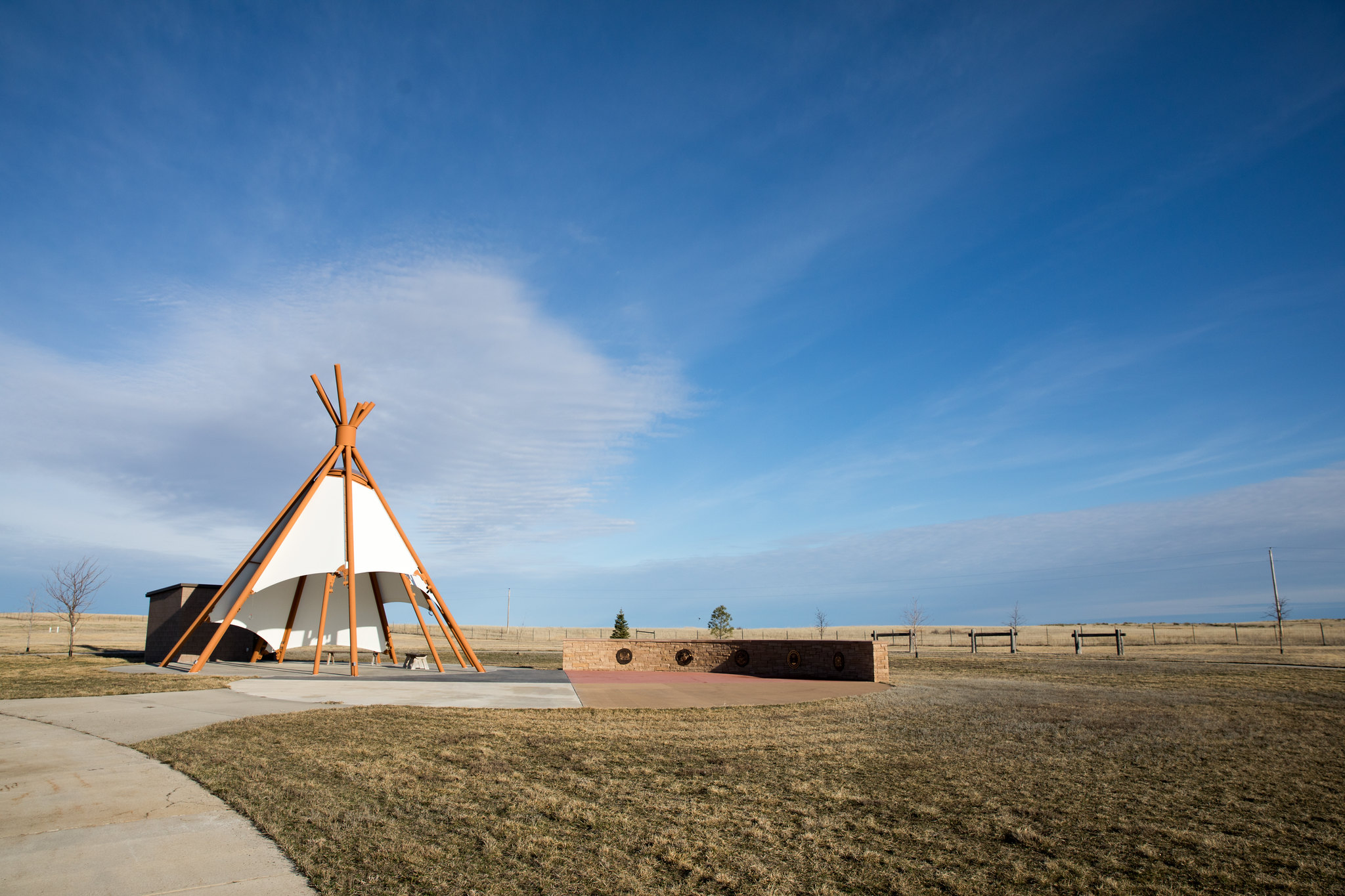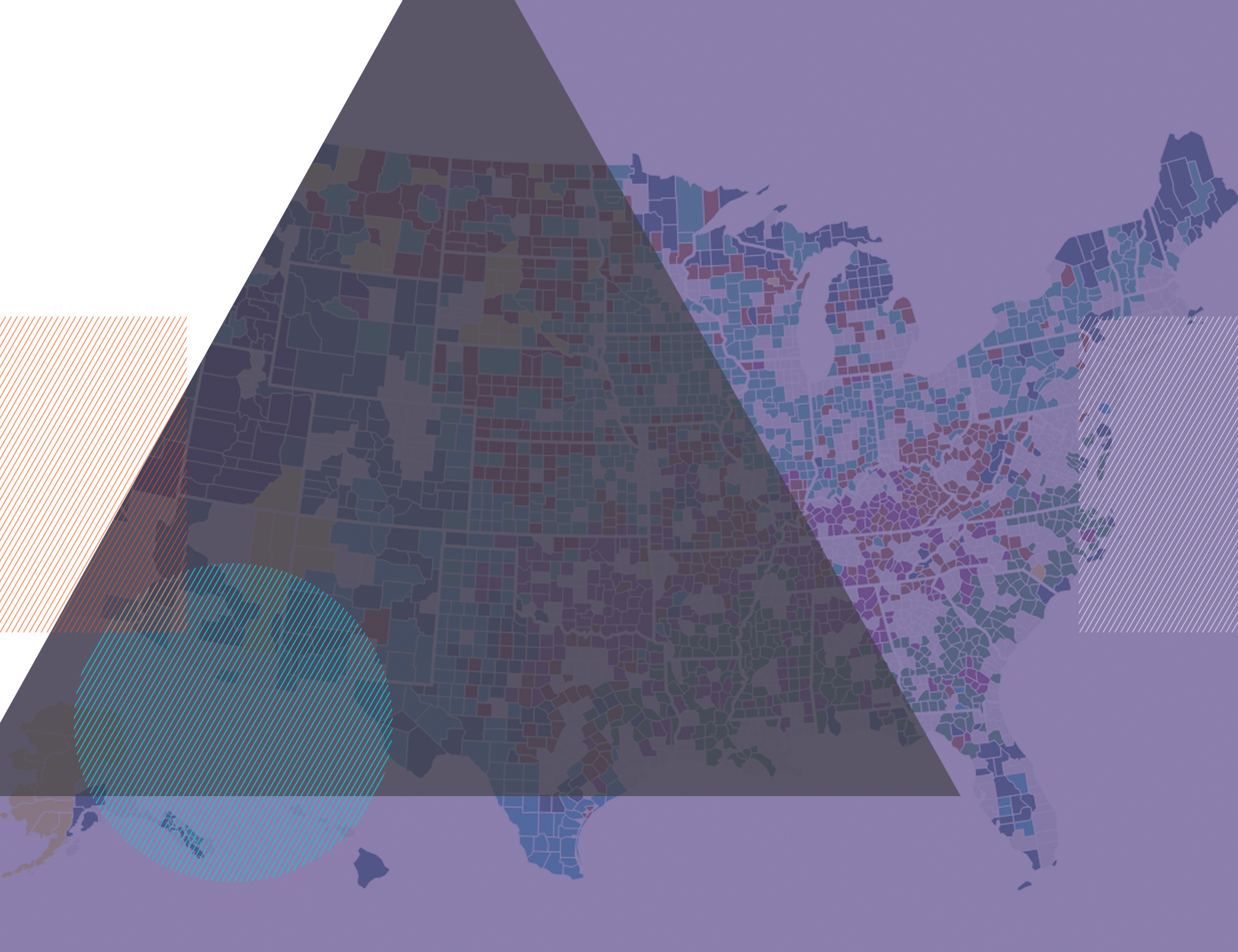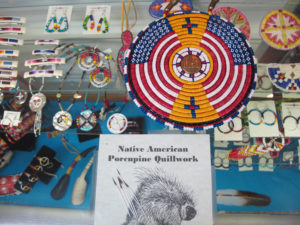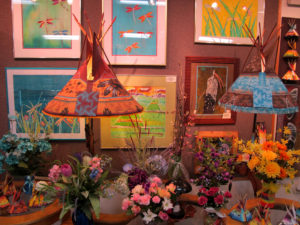Todd County, South Dakota: Native American Land
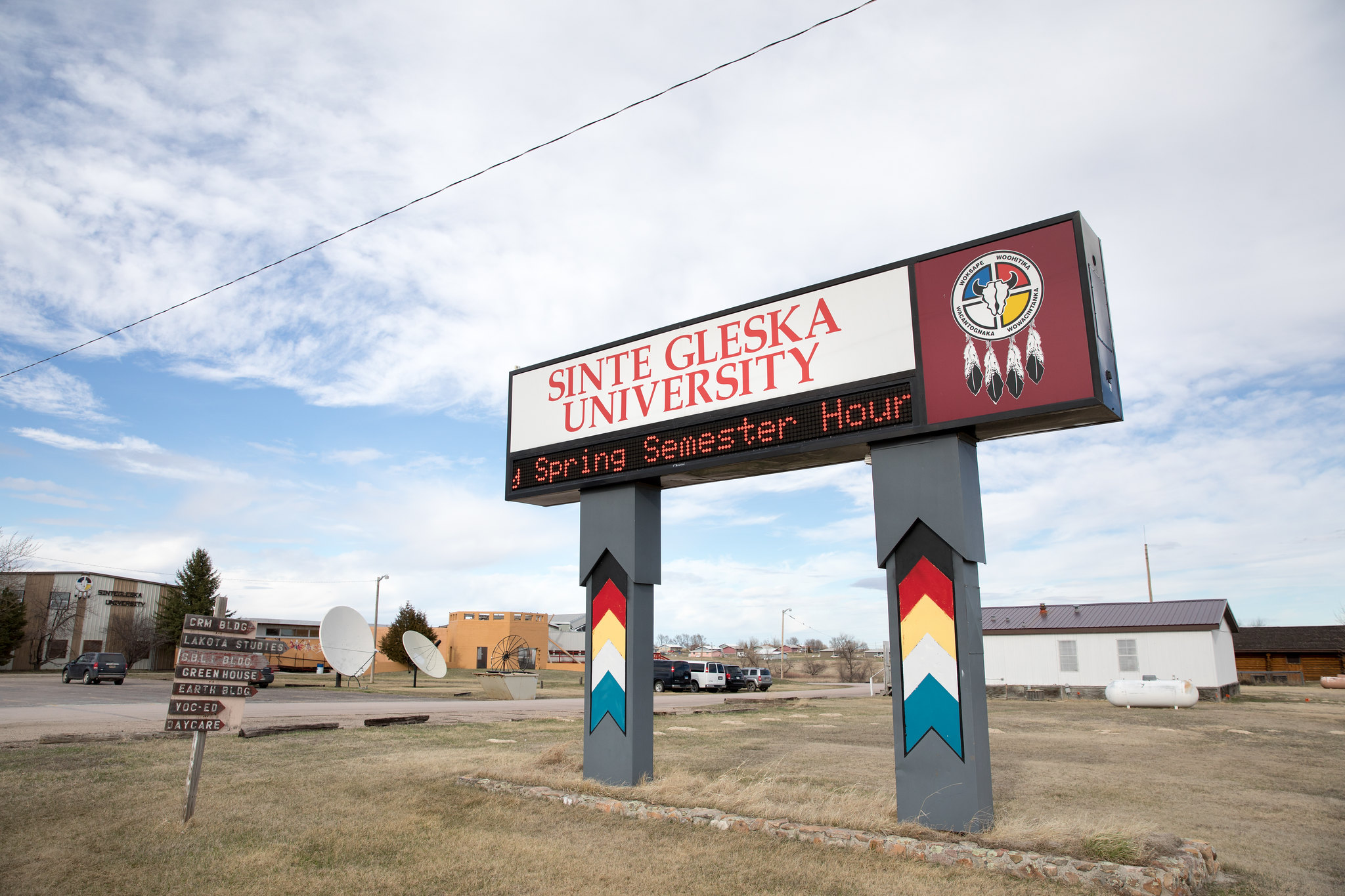
More than a millennium before gold was discovered in South Dakota’s Black Hills in 1874, spurring the last great gold rush in the continental U.S., the Lakota people were born in these hills and roaming the surrounding plains. Today, one of seven Lakota tribes, Sicangu Lakota Oyate (“Burnt Thigh Nation”), also known as the Rosebud Sioux Tribe, is confined to the Rosebud Indian Reservation located in Todd County and parts of four other counties in the state. A Native American Lands community in south-central South Dakota bordering Nebraska, Todd County was named after John Blair Smith Todd, a Civil War general and Dakota Territory delegate to the U.S. House of Representatives.
Residents say their roots here go back at least 2,000 years, likely longer, citing research from Sinte Gleska University, the accredited four-year tribal university on the Rosebud Reservation in Mission, South Dakota, as well as NASA’s tracking of star constellations. “We plan on being here for another 2,000. This is where we come from. We can’t separate ourselves from this land. This is our home. The bones of our ancestors are buried here, and we have a sacred duty to watch over and protect it,” says Wizipan Little Elk, CEO for REDCO, Rosebud Economic Development Corporation. Formed in 1999 by the Rosebud Sioux Tribal Government, REDCO defines its purpose: “to generate revenue and create economic opportunity for the Sicangu Lakota Oyate and surrounding communities.”
What becomes clear in conversations is how trust underpins prosperity. Residents say trust has been broken and opportunity lost as a result of many U.S. government policies and practices spanning more than 150 years: severed treaties, killings, racism, forced sterilizations, forced relocations onto reservations and placements in boarding schools, and a lack of promised quality health and social services.
While the social, economic, and health adversities remain extreme in Rosebud — Todd is classified as a persistent poverty county — residents exude pride in their heritage and possess a steely mindset to bring restoration. Several organizations and institutions, including REDCO, Sinte Gleska University, Tokala Inajinyo Suicide Prevention Mentoring Program, Rosebud Sioux Tribe Head Start, and the Boys & Girls Club of Rosebud, are leading efforts to address daily problems, revolutionize Rosebud, and sustain the community’s promise for future generations.
Todd County Index
Todd County Within Native American Lands and Rural America
From Peace Treaty to Persistent Poverty: Noting History
The Community’s Quest to Upend the Status Quo
From Local to Global: Recognizing Universal Connections
Todd County Within Native American Lands and Rural America
Some bright spots for Todd County’s future: Its population has grown 5% since the 2010 census, countering the trend of rural America. Its youth population stands out at 41%, even among Native American Lands, where the median is 31%. In contrast, in broader rural America just 22% are under 18.
Yet the socioeconomic factors for youth are currently unfavorable. In Todd, 56% of children live in poverty, compared with 33% in Native American Lands and 22% in rural America. Nearly three-quarters (74%) live in single-parent homes. In Native American Lands, the median reaches 50%, while in rural America it’s 32%.
Todd’s median household income sits at $29,046, below the $41,900 median in Native American Lands and well below rural America’s $46,600. (In 2017, the federal poverty line was $25,094 for a family of four.)
Educational attainment is on the lower end of the scale. In Native American Lands, just 72% graduate from high school, and Todd’s rate is 56%. Compare that with the 90% median rate in rural America, according to the 2019 County Health Rankings. In Todd, 49% of 25- to 44-year-olds have some college education compared with 48% in Native American Lands and 54% in rural America overall.
On housing, 30% report severe housing problems in Todd, compared with 21% in Native American Lands and 13% in rural America. Problems include overcrowding, high costs, or lack of kitchen or plumbing facilities.
Todd struggles with many health challenges. Principally, the premature death rate is 22,124, considerably higher than the Native American Lands rate of 15,500. Both soar above the median in rural counties of 8,641, according to the Rankings. This refers to the years of potential life lost before age 75 per 100,000 population (age-adjusted).
Todd County’s teen births are 110 per 1,000 in the female population ages 15-19, much above the 65 median in Native American Lands and the 34 median in rural America.
Unlike many places in rural America, smoking is a persistent health behavior in Todd. The adult smoking rate is 39%. Native American Lands show a rate of 27%, while rural America’s is 18%.
Access to health care is very poor with a primary care provider ratio of 10,155: 1. Native American Lands’ ratio is 2,225:1, similar to rural America’s 2,288:1.
Todd’s food environment index — accounting for income and closeness to healthy food — is 5.1 compared with Native American Lands’ 4.9. Both rank much lower than rural America’s 7.6. It’s noteworthy that 41% of households in Todd County receive SNAP benefits — it’s the seventh-highest percentage in the U.S.
From Peace Treaty to Persistent Poverty: Noting History
The Lakota’s struggle to preserve their homeland has been a defining feature of life here. The 1868 Treaty of Fort Laramie was intended to bring peace between Native Americans and whites by establishing the Great Sioux Reservation, which included South Dakota, parts of northern Nebraska, and eastern Montana. That hope evaporated after Gen. George Custer led a U.S. military expedition into the Black Hills with miners seeking, then finding, gold. The 1870s were marred by war.
According to Little Elk, U.S. encroachment started with a specific strategy. “Part of that strategy was the decimation of the buffalo. The buffalo were really the lifeblood for us. We don’t really see any difference between us and the buffalo….They provided our food, our shelter, our spiritual ceremonial items, our housing for teepees, utensils. Buffalo hides, in addition to horses, were the primary item of trade, the primary currency for us.”
An intricate system of various parts including buffalo had worked together for the Lakota’s endurance. As REDCO colleague Michael LaPointe, an economic development specialist, describes: “We had a pre-reservation economy. We had forms of government, institutions, and social service systems, but … the federal government never recognized those systems as existing and instituted its own policies that were so detrimental and really decimated an entire culture, an entire group of people….
“At the end of day we’re still reeling from those effects from those policies that were instituted at the highest levels of government. So our social and economic indicators … always lag in the bottom 10 [counties in the country].”
The Community’s Quest to Upend the Status Quo
Data as the Building Blocks for Change
Bringing crucial numbers to the fore identifies where the needs lie. While the U.S. Census reports that Native Americans account for 2% of the population, the 2018 Frontline Solutions report “We Need to Change How We Think: Perspectives on Philanthropy’s Underfunding of Native Communities and Causes” found that 0.23% of philanthropic funds are given to organizations led by Native Americans. Philanthropy News Digest noted “that support for Native American organizations and causes fell by nearly 25 percent between 2006 and 2012, even as overall foundation giving increased significantly.”
REDCO is taking initiative to start from scratch with data toward helping people live healthier, more prosperous lives, says LaPointe. REDCO’s Executive Assistant Katrina Fuller has been helping with the data collection for its comprehensive economic development strategy. “It was the most difficult thing I’ve had to do because you know for a fact these numbers are all wrong. That sign in Mission says there’s what, 1,200 people here. There’s not 1,200 people in Mission; there’s a lot more than that,” Fuller says.
The discrepancies are wide and differ by source. As an example, Fuller says, the U.S. Census recorded that 13,800 people live on the reservation, the Indian Health Service reported about 29,000, and the tribe’s enrollment report listed about 34,000.
LaPointe articulates why the chasm matters. “If you’re going to end poverty, who are you going to end it for? How many? That’s a very fundamental base question. If you can’t answer that accurately, then how’s your solution going to work. These are completely moving targets, some of which REDCO’s hit and moved along. From a statistician’s point of view, there’s a lot more to be done.
“My goal is to be able to get to a point where we’re going to build econometric models and see what variables are going to have the biggest impact in turning people’s lives around,” LaPointe affirms.
Reengineering an Economy for an Undefined Future
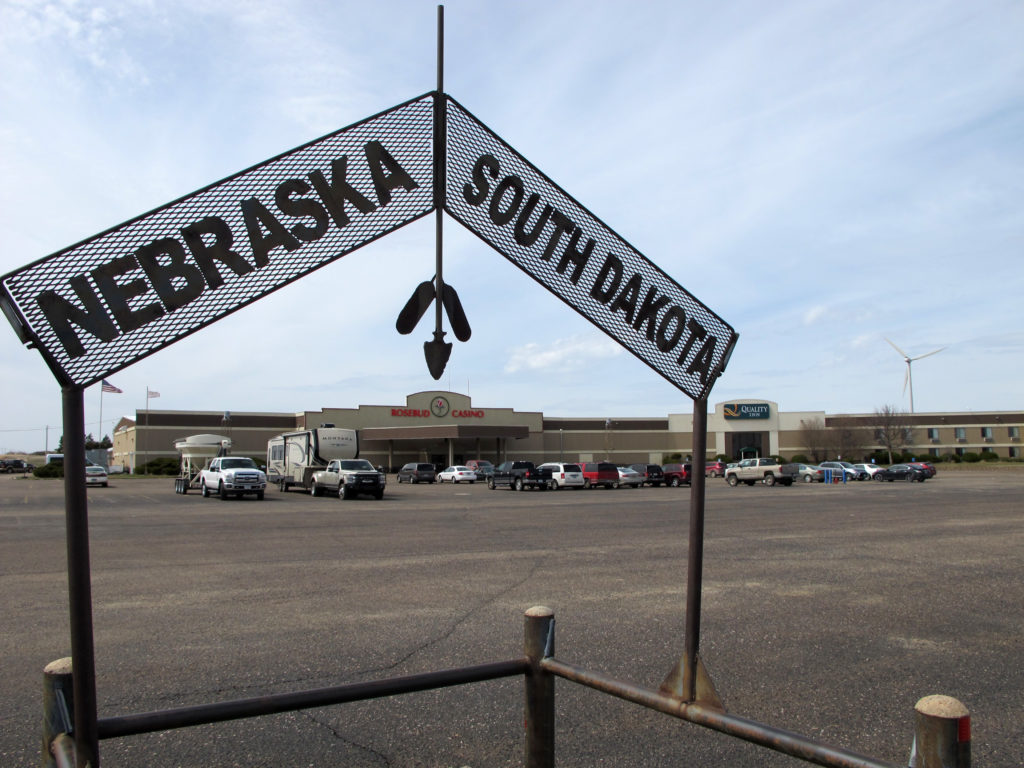
On the Nebraska-South Dakota border just off U.S. Route 83 stands an economic pillar: Rosebud Casino, owned and operated by the Rosebud Sioux Tribe. But generally businesses on the reservation are owned by non-natives while a majority of native enterprises run in the underground economy, says REDCO’s Development Officer Eileen “Taffy” Lafferty. These include catering, quilt-making, beading, selling wood, and being a shadetree mechanic. “You don’t pay taxes; you don’t have a business license, but you support your family. So if you look around, a lot of our kids don’t have role models of native businesses,” Lafferty says.
In similar respects, many people on the reservation only use cash and do not bank, Lafferty says. She points to the community’s fraught relationship with the only financial institution on the reservation, Wells Fargo, because of its support of the Dakota Access Pipeline. And the bank’s sole location in Mission is inconvenient for many residents who live miles away and cannot access reliable transportation.
REDCO’s Development Officer Eileen Lafferty discusses the giving versus saving mindset of residents and teaching financial literacy.
Also in Mission are two grocery stores within two miles of each other. Family-owned Turtle Creek Crossing Super Foods contains a large sit-down area for meals. Its website entreats shoppers with 10 points, including: keeping dollars in the local economy, creating local jobs, nurturing the local community, helping the environment by buying locally, and investing in local ownership. Down the road, Buche Foods, owned by a fourth-generation grocer, has a pay-at-the-pump location.

LaPointe notes that Rosebud’s leakage rate — calculated when people leave to buy goods and services elsewhere — is high at 83%. According to the 2017 South Dakota Sales and Use Tax Report, $148 million in household income leaves the Rosebud Reservation every year, and the 2019 U.S. Bureau of Economic Analysis reported that approximately $252 million per year exists here. REDCO wants to recapture what’s leaving and capture what’s here to support more native-owned businesses.
On reservation housing, two issues predominate. The community is short 4,000 housing units, and many homes, contaminated by meth, have been boarded up.
While the community wrestles with these daily challenges, a long-range plan for Rosebud’s future is in its formative stage. As REDCO leaders prepare thick binders and update a running spreadsheet and project schedules with ideas and plans, Little Elk explains the need for detail: “Rosebud Sioux Tribe Constitution says that we have a duty to consider the impact of our decisions on the next seven generations.”
When his team had to figure out what such consideration meant for strategic planning, they decided to create a 175-year plan to explore far-reaching questions: “Where are we going to live? Where are we going to get our energy? What are we going to eat? Where are we going to get our food from? Are we going to have clean water? What does education look like? Where are we going to work? What kind of jobs are we going to have? What’s our relationship with technology going to be? What’s our relationship with AI going to be? Are we going to have a colony on Mars?… You can SWOT [Strengths, Weaknesses, Opportunities, Threats] this stuff out, looking at assets and opportunities,” Little Elk says.
The changing environment is agitating everything — but community leaders aren’t wasting time despairing. Little Elk explains, “We’ve been talking about the need to have a more holistic approach to development, locally and globally… We’re having to deal with climate change. We didn’t have anything to do with it, but we’re the ones that are being severely impacted by it….
“I think we have solutions we can provide to the rest of the globe. When we talk about farming and developing local economies and natural systems … those are going to be the solutions that are essentially going to ensure the continuing of the human race on this planet.”
It is firmly keeping with one of REDCO’s core tenets, sustainability: “Thinking of the 7th Generation and creating a self-sufficient environment. Moving away from dependence to uphold our sovereignty.”
Reasserting Lakota Culture
Just off U.S. 83 in Mission, Soldier Woman Art & Gift Gallery draws customers from around the world, carrying intricate artwork, crafts, and jewelry from Native American artists who use quill and beads among other fine materials. Artist and member of the Rosebud Sioux Tribe Linda Szabo owns and operates the gallery, where artists’ workmanship earns rave reviews online.
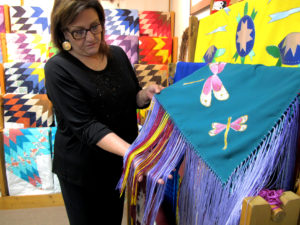
It’s one of the many ways residents bring to light the community’s unique culture — across life stages. As Kevin DeCora, professor and chair of the human services department at Sinte Gleska University, puts it: “We have our Lakota culture, and that, in a sense, is what is really healing a lot of people and bringing back good things for these communities.”
The Lakota’s Seven Sacred Rites form the foundation to “live that spiritual way with action,” DeCora says. Two well-known ceremonies are The Sweat Lodge and The Sun Dance. Then, there’s The Making of Relatives, promoting the idea that no one is alone and there are no orphans. “We’re going to pull you into our family,” DeCora explains.
In the ceremony Preparing a Girl for Womanhood, a girl learns about her body, how to take care of herself, and how to be a mother. While away in a teepee for four days, a girl begins to understand how powerful she is. The ceremony usually occurs around a girl’s first period; DeCora says he took his daughter to one this past year. “This wasn’t happening 15 or 20 years ago,” he says, mulling if that’s because people didn’t understand what the ceremony was all about or didn’t know how it was supposed to proceed.
The Vision Quest is for boys in puberty as they take the path to become men. Boys learn how to make an altar and set it on a hill marked by a medicine man. While building their altar, they remain outside for four days and nights without food and water. “They ask the creator for a vision of how they’re going to live their life so it gives them purpose and direction,” DeCora says.
Lakota cultural elements are also woven into educational programs for children and adults. At Head Start, Director Vonda Pourier-Whipple shares how they inculcate youth.“We have our cultural basis. So they’re learning bits of the language. They label everything in our language. They try to impress upon the kids … the colors, the kinship system, certain foods, body parts….” Her team provides cultural trainings for parents by parents who teach skills they’ve mastered, like shawl-making and drum-making. “If we lose our culture and language, then we lose who we are as Sicangu Lakota Nation,” Pourier-Whipple notes.
Witnessing Triumphs and Trials in Education
Sinte Gleska University, founded in 1971 and named for a war chief and statesman, is one of 37 tribal universities in the American Indian Higher Education Consortium. The university’s mission is “to provide the people of the Sicangu Lakota Nation with an experiential-based program within the context of cultural and traditional values. All programs are designed to provide students with professional and academic skills necessary for employment and personal development.”
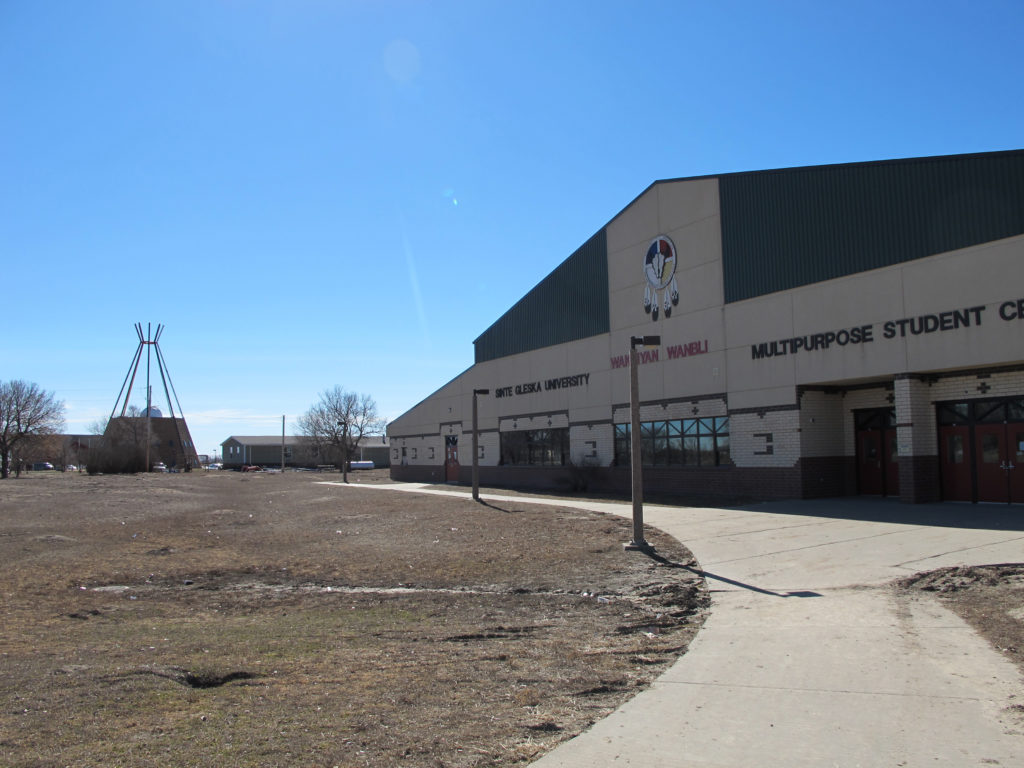
Sinte Gleska fulfills this role — and more. “It educates people and gets them out there and ready to go into jobs that are going to help people like human services,” DeCora says. “We have hundreds of graduates over 40 years that are all working with bachelor’s degrees in mental health, criminal justice, chemical dependency. So they’re working in the alcohol treatment programs, in the juvenile detention facilities, in adult correctional facilities, in the courthouses.”
One graduate making an impact is William Long, who after earning his bachelor’s degree, received the Rosebud Sioux Tribal Council’s support to start the Sicangu Youth Program in 2018, focusing on life skills.“He came through here. He understands mental health; he understands genocide, assimilation, intergenerational trauma. Now that he’s in charge, he’s starting to put mental health pieces in there to move people toward the ceremonies,” DeCora says. Long is working on his master’s degree here now.
Moving down the educational pipeline, Pourier-Whipple runs the largest tribal program as director of the Rosebud Sioux Tribe Head Start and Early Head Start. When she first started in 2010, the budget was $2.1 million. With Head Start duration funding, the budget is increasing to $6.4 million. Head Start’s child-faculty ratio is 10:1; Early Head Start’s is 4:1.
In addition to providing education, Pourier-Whipple and her team contend with entrenched social problems. “It’s intergenerational trauma. [Whether it’s] addictions, sexual abuse, it trickles down from generation to generation until you make a stand yourself and say, ‘Hey, I’m not going to live that life. I was raised that way. But I’m not going to raise my kids that way.’… It’s so hard for some people to do that. They’re enmeshed in it. ”
To help parents move onto a straighter path, parent education is available for the 315 families in Head Start and the 88 families in Early Head Start. “The problem that we run into is … the kids will tell Mom, ‘I don’t want to go to school today,’” says Pourier-Whipple. As a result, regular student attendance remains a problem.
Some parents do participate in the education designed for them, then want to become part of the team, she says. Access to attend Sinte Gleska University is a valuable incentive, Pourier-Whipple attests. Head Start pays tuition for a class, and an employee receives a pay increase after earning a degree.
“When I started in ’87…I was supposed to have an [Associate in Arts], but I was one class short,” Pourier-Whipple reveals. “After I got my AA…I got an increase…and then they paid for a class. I’m like, I think I’ll just keep going and ended up getting two bachelor’s degrees and then a master’s degree. The biggest strengths here are our college and our culture.”
Employees handle about 60 kids at a time. Their help takes many forms, including providing transportation around the reservation and even to pediatric dental appointments in Rapid City, South Dakota, more than two and a half hours away.
Currently, Head Start employs 116 people, with 25 additional positions set to open. While the program is growing, Pourier-Whipple always worries about staff outages. “On any given day, you’re going to have seven to eight people calling in, so you’re trying to scramble around. It’s people in this office who have to go in because we only have two classroom rovers.”
All teachers with degrees are paid $20 an hour, comparable to the closest school districts, but Pourier-Whipple has higher aspirations, namely that every classroom position in this program be paid more than the three surrounding school districts. “Hopefully that helps us retain our staff,” she says.
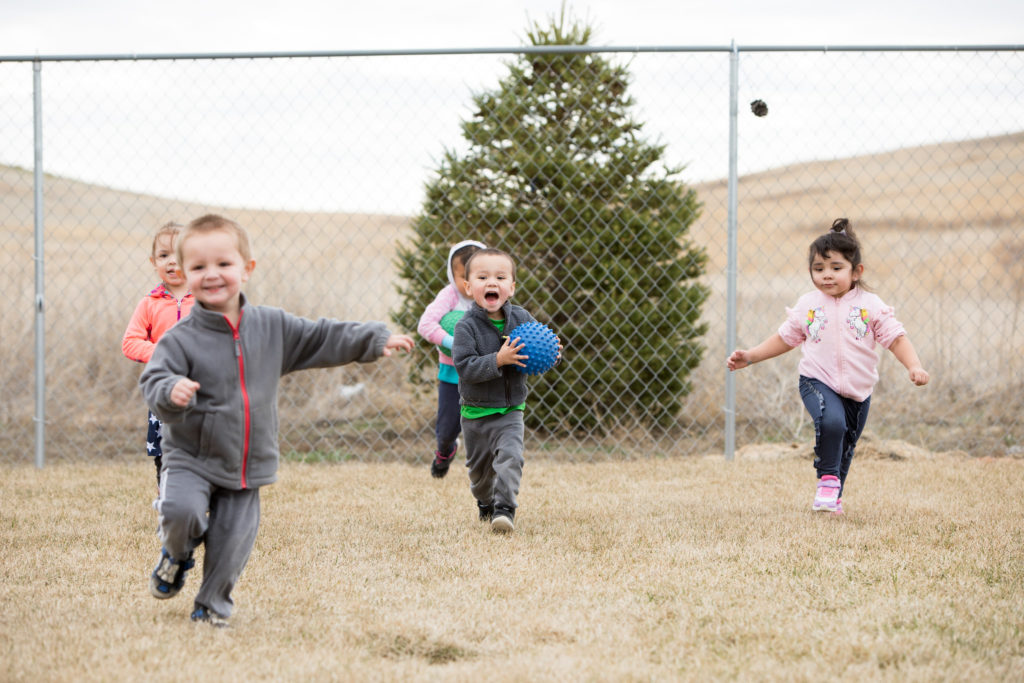
Turning Over Well-Being Challenges
Tokala Inajinyo Suicide Prevention Mentoring Program confronts the problem of suicide head on by training youth to be peer mentors. Project Coordinator Jessica Two Eagle, who started here as a counselor in 2014, reveals her motivation for working in this field: “I would say from a young age, losing a lot of classmates from suicide.”
Today, she says social media is one of the bigger stressors for young people and affects the unrealistic expectations they have for themselves. It’s leading to suicidal thoughts at younger ages.
In addition to offering suicide prevention services for youth and adults, the program meets groups in jail and the Juvenile Detention Center, and conducts anger management classes for the public. Opportunities to explore spirituality are available, too. The program regularly hosts events for the Rosebud Sioux Tribe’s 20 communities, and staff spread the word to outlying communities through social media, radio, and fliers. They also provide QPR (question, persuade, refer) training to help people recognize the warning signs of suicide and intervene.
For his part, DeCora says he’s certified 216 high school students in QPR. He’s also a master trainer for Applied Suicide Intervention Skills Training (ASIST), which he applies all over the area.
Finding Purpose Among Youth
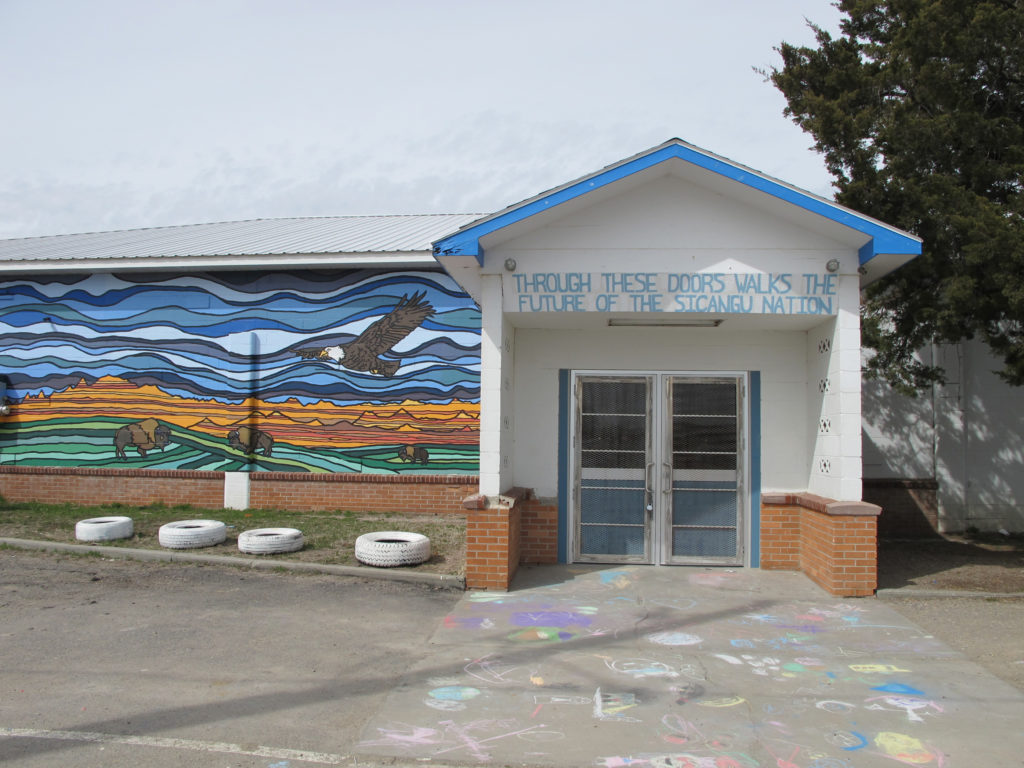
Another positive force for youth is the Boys & Girls Club of Rosebud, which includes centers in Mission, Rosebud, and Parmelee, South Dakota. The staff comprises seven full-timers and 19 part-timers among the three locations. Executive Director Glen Marshall, who grew up in the suburbs of Minneapolis, Minnesota, finds purpose in helping children here develop. “I love that I get to do this, working with youth, providing something that would not be there otherwise, like our dinner program, or lacrosse, or baseball, or whatever,” he says.
About 485 kids are enrolled in the program, and about 135 kids attend the club daily, Marshall says. The elementary school program encompasses grades K-5 while the teen program includes grades 6-12. Two points of pride: turning a ’60s bowling alley and restaurant into an active teen center and starting a new academic tracking system.
The club uses its Facebook page to share updates of activities and events. For kids from low-income families whose phones may have been shut off or their phone numbers changed, Facebook is a steady communication channel because people can log in to their profile using someone else’s phone. Staff often use Facebook Messenger to communicate with parents because it can be the best way to get ahold of them, Marshall says.
What keeps him up at night are “kids with really bad home lives, with a lack of support and safety they need.” At the same time, Marshall sees a lot of hope: “We’ve got some youth coming up that are really motivated with an understanding of their culture…there’s a lot of people making efforts in that area.”
From Local to Global: Recognizing Universal Connections
As residents describe how culture and spiritual practices connect them to one another, REDCO’s Wizipan Little Elk stresses what binds the Lakota to all humanity. “We want what everyone wants: to have a say over our land, to be able to worship God, and to raise families in a safe and healthy environment. I think sometimes people like to get all mystical about everything… but we are the same as everybody else in those respects. We have our own language, and we have our own stories; we have our own customs and cultural practices and beliefs. That’s just what makes us unique, like any other group of people in the world,” he says.
